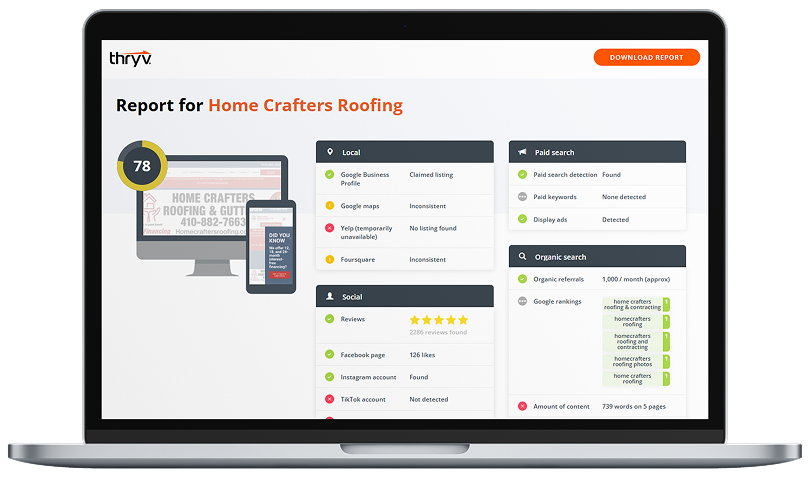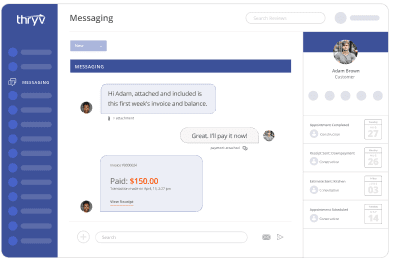Running a small business means every dollar counts. But too often, business owners unknowingly drain their resources by spending on the wrong things or doing tasks the hard (and expensive) way. From overhiring when automation can do the job, to wasting countless hours on manual processes that divert you from real growth opportunities, the hidden costs add up quickly. In this post, we’re breaking down the top ways small businesses waste money—and more importantly, how to stop the bleed. Whether you’re looking to tighten your budget or reclaim your time, these insights will help you make smarter decisions that reduce small business expenses and support long-term success.
How to Reduce Small Business Expenses
1. Automate busywork.
2. Leverage AI and outsource with purpose.
3. Audit software fees.
4. Use free/low-cost tools.
5. Check insurance + bank fees.
6. Trim wasteful marketing.
7. Budget + track spending.
8. Boost energy efficiency.
1. Automate busywork.
One of the biggest money drains for small businesses is paying employees or using your own time for repetitive tasks that could easily be automated. Think data entry, invoice generation, appointment reminders, email follow-ups, inventory updates, and even customer service responses. These types of tasks are necessary, but when they pile up, they consume valuable hours that could be spent on strategic work, such as growth planning, marketing, or enhancing the customer experience.
Today’s automation tools are affordable, user-friendly, and designed specifically with small businesses in mind. Platforms like Thryv can streamline operations with minimal setup. By automating tasks that don’t require human judgment or creativity, you reduce the need for additional headcount and free up your team’s bandwidth for higher-value activities. The result? Less money spent on labor for low-impact work, and more time to actually run and grow your business.
2. Leverage AI and outsource with purpose.
One of the most common (and costly) missteps small businesses make is defaulting to full-time hires for every task. While growing your team is often necessary, bringing on full-time employees for specialized, seasonal, or part-time roles can significantly increase expenses, considering salaries, benefits, equipment, and onboarding costs. A smarter, more agile approach combines strategic outsourcing with the power of AI.
Today’s small businesses are embracing AI as a key tool for reducing costs and streamlining operations. According to our latest AI and Small Business Adoption survey, AI usage among small businesses has increased by 40% in just the past year, with 55% of businesses now utilizing it regularly. This shift is fueled by a need to do more with less. AI is helping businesses automate tasks like data analysis, content creation, customer communication, and more.
In fact, 63% of small businesses using AI report that they rely on it daily, enabling them to reclaim valuable time and redirect resources toward growth and innovation. Importantly, AI isn’t seen as a threat to jobs. Instead, it’s being adopted as a strategic partner in scaling operations and navigating economic uncertainty. More than 80% of small business owners now agree that AI is essential for reaching new customers and staying competitive.
Combined with thoughtful outsourcing, such as hiring freelancers, contractors, or agencies for tasks like bookkeeping, graphic design, IT, and customer service, AI helps small businesses remain lean without sacrificing quality. The key is to outsource and automate what you can, allowing you to focus on what only you can do: strengthening customer relationships and enhancing your product. By blending human expertise with intelligent automation, small businesses can reduce overhead, increase efficiency, and set the stage for sustainable growth.
3. Audit software fees.
It’s easy for small businesses to fall into the “set it and forget it” trap when it comes to software. You sign up for a tool to solve a specific need, then months (or even years) later, you’re still paying for it, even if it’s no longer being used. These small, recurring charges might seem harmless, but they add up quickly and can quietly drain hundreds or even thousands of dollars from your budget every year.
To stop this slow leak, conduct a regular audit of all your software subscriptions. Look for duplicate tools, outdated services, or features you’re not using. Evaluate which tools are actually helping and which ones just create noise. Cancel or downgrade plans that no longer meet your needs, and consider bundling platforms or switching to all-in-one solutions, such as Thryv, when possible. Staying on top of this ensures you’re only paying for tools that deliver real value, keeping more money in your pocket.
4. Use free/low-cost tools.
You don’t need a massive software budget to run an efficient and professional business. In fact, many of the tools that small businesses rely on every day, such as design platforms, project management apps, marketing automation, and customer relationship management (CRM) systems, offer robust free versions or low-cost plans tailored for smaller teams. Tools like Canva, Google Workspace, Trello, Slack, and Mailchimp offer powerful functionality without a hefty price tag, especially when scaling cautiously. Other tools, such as Thryv, offer a range of free tools for you to explore.
Before investing in premium software, explore whether a free or affordable alternative can meet your needs. Many small businesses run successfully for years using exclusively free tools and upgrading only when necessary. Choosing budget-friendly software not only reduces overhead but also encourages smarter, more intentional tech spending. It’s a simple shift that helps preserve cash flow without sacrificing productivity or professionalism.
Market and Grow Your Business More Effectively With Marketing Center
Marketing Center helps you attract new customers to your business and shows you which marketing strategies work best for your customers so you don’t waste time and money on the wrong tactics.

5. Check insurance + bank fees.
Small businesses often stick with the same insurance providers and bank accounts year after year, assuming the rates and terms are standard. But the reality is that both financial services and coverage options evolve, and so do your business needs. Over time, what once felt like a good deal can become a source of hidden expenses. Monthly maintenance fees, transaction limits, credit card processing costs, and outdated coverage can quietly eat into your profits.
To avoid overpaying, schedule a yearly review of your insurance policies and banking services. Compare quotes from other providers and ensure your coverage reflects your current risk profile. Likewise, explore banking options specifically designed for small businesses, many of which offer no-fee checking accounts, cash-back rewards, and enhanced tools for managing your cash flow. A few phone calls and a little research can add up to significant long-term savings.
Tip: ThryvPay is an excellent online payment processing software built for your small business. Find out how much you can save here.
6. Trim wasteful marketing.
Marketing is essential, but it can quickly become a money pit when you invest in the wrong channels or fail to measure performance. Many small businesses fall into the trap of running ads “just to stay visible” or continuing campaigns out of habit, even if those efforts aren’t bringing in leads or sales. Without clear metrics and regular analysis, it’s easy to overspend on vanity projects or ineffective outreach.
To make smarter marketing decisions, track what’s actually working. Measure ROI for each campaign, platform, and tactic, whether it’s social media ads, email newsletters, SEO, or print materials. Shift your budget toward the channels that deliver results and cut or retool those that don’t. Focus on strategies that generate clear value, like targeted content marketing or referral programs. By being selective and data-driven, you can grow your audience without burning through your budget.
7. Budget + track spending.
Without a defined budget, even the most well-intentioned business owner can overspend. Small, untracked purchases, irregular invoices, and one-off fees can quickly snowball into significant monthly expenses. Worse, a lack of budgeting makes it hard to identify financial red flags or spot opportunities to save.
Creating a monthly or quarterly budget, broken down by category, gives you visibility and control. Pair that with expense-tracking tools like QuickBooks, Wave, or even simple spreadsheets to monitor where every dollar goes. Reviewing actual spending against your budget regularly enables you to identify trends, make course corrections quickly, and allocate funds more effectively. Budgeting isn’t about cutting corners; it’s about making sure your money is working where it matters most.
8. Boost energy efficiency.
Many small businesses overlook energy use as a controllable cost, but inefficient lighting, outdated equipment, and careless habits can drive up utility bills month after month. If you’re running a physical location, such as an office, shop, or warehouse, those expenses can become a significant drain on your budget over time. It’s not just about being environmentally conscious; energy inefficiency directly impacts your bottom line.
Simple changes can lead to noticeable savings. Switch to LED lighting, install programmable thermostats, unplug idle electronics, and regularly maintain your HVAC systems. Encourage staff to power down at the end of the day and consider conducting an energy audit to identify areas of high energy consumption. Even if you’re leasing space, small changes can add up. If you own your location, investing in energy-efficient appliances or insulation can dramatically reduce long-term costs. Lowering utility bills frees up resources that can be reinvested in growth, staffing, or enhancing the customer experience.
Turn Small Business Expenses Into Growth Opportunities
Reducing costs isn’t just about cutting back; it’s about making space for smarter growth. When you streamline operations, eliminate wasteful spending, and redirect funds toward what truly drives growth, your small business becomes more agile, efficient, and profitable. Every dollar you save on unnecessary headcount, outdated software, or excess inventory can be reinvested in high-impact areas, such as marketing, product development, or customer experience.
Start by identifying where your money is quietly slipping away, and take simple, strategic steps to plug the leaks. From automation and outsourcing to energy efficiency and digital workflows, small changes add up fast. By treating expense management as a growth strategy, not just a cost-cutting exercise, you can build a leaner, stronger business that’s ready to scale.


